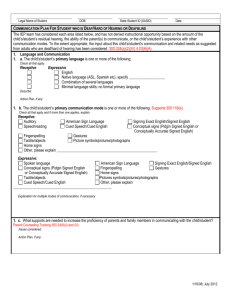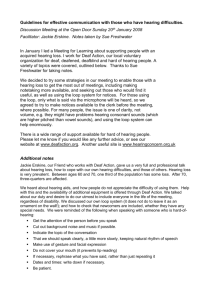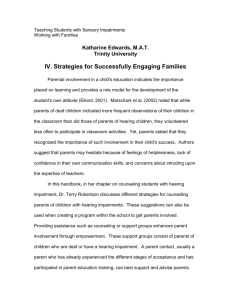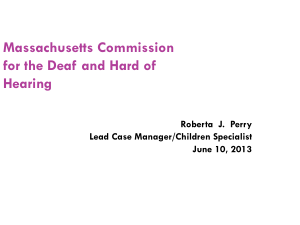Part 3 - Deaf, Deafened or Hard of Hearing
advertisement
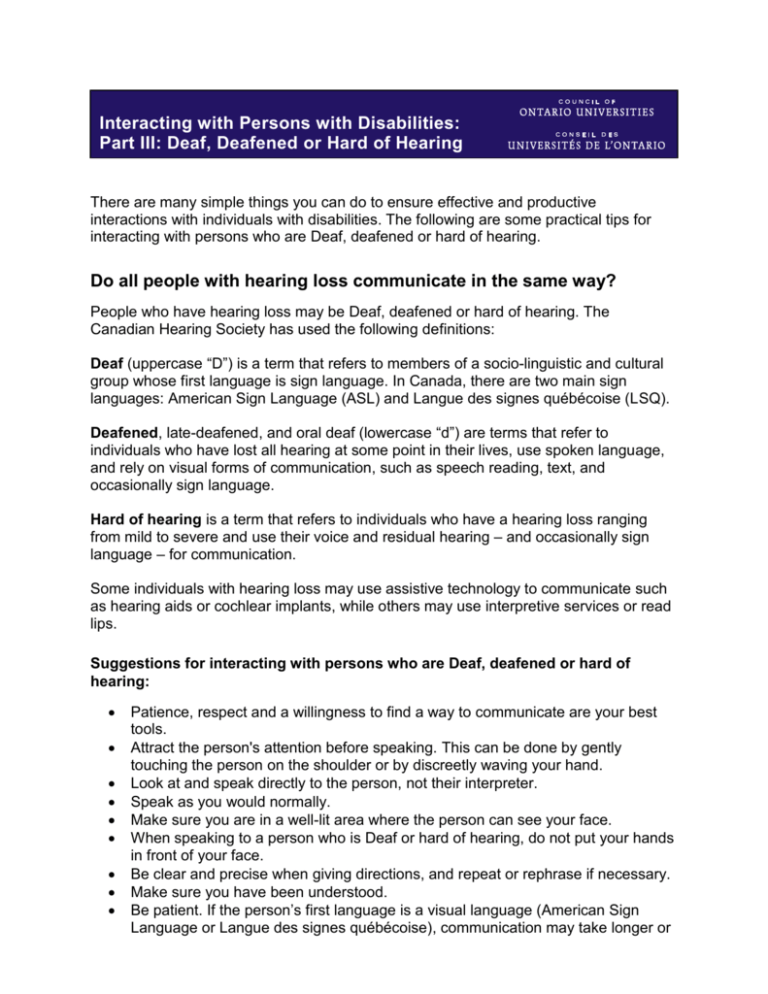
Interacting with Persons with Disabilities: Part III: Deaf, Deafened or Hard of Hearing There are many simple things you can do to ensure effective and productive interactions with individuals with disabilities. The following are some practical tips for interacting with persons who are Deaf, deafened or hard of hearing. Do all people with hearing loss communicate in the same way? People who have hearing loss may be Deaf, deafened or hard of hearing. The Canadian Hearing Society has used the following definitions: Deaf (uppercase “D”) is a term that refers to members of a socio-linguistic and cultural group whose first language is sign language. In Canada, there are two main sign languages: American Sign Language (ASL) and Langue des signes québécoise (LSQ). Deafened, late-deafened, and oral deaf (lowercase “d”) are terms that refer to individuals who have lost all hearing at some point in their lives, use spoken language, and rely on visual forms of communication, such as speech reading, text, and occasionally sign language. Hard of hearing is a term that refers to individuals who have a hearing loss ranging from mild to severe and use their voice and residual hearing – and occasionally sign language – for communication. Some individuals with hearing loss may use assistive technology to communicate such as hearing aids or cochlear implants, while others may use interpretive services or read lips. Suggestions for interacting with persons who are Deaf, deafened or hard of hearing: Patience, respect and a willingness to find a way to communicate are your best tools. Attract the person's attention before speaking. This can be done by gently touching the person on the shoulder or by discreetly waving your hand. Look at and speak directly to the person, not their interpreter. Speak as you would normally. Make sure you are in a well-lit area where the person can see your face. When speaking to a person who is Deaf or hard of hearing, do not put your hands in front of your face. Be clear and precise when giving directions, and repeat or rephrase if necessary. Make sure you have been understood. Be patient. If the person’s first language is a visual language (American Sign Language or Langue des signes québécoise), communication may take longer or be approached slightly differently than you are anticipating. Remember, the person is actually communicating in a second or third language. Try to hold your conversation in a quiet area, as background noise may be distracting for persons who are hard of hearing. If you are not sure what to do, ask, "Can I help?" Source: A guide for professors – Minimizing the impact of learning obstacles (http://www.sass.uottawa.ca/access/professors/) To obtain this document in an alternative format, please contact: Hannah Yakobi | Council of Ontario Universities 180 Dundas Street West, Suite 1100, Toronto ON M5G 1Z8 Tel: 416-979-2165 | hyakobi@cou.on.ca | Fax: 416-979-8635 | Web: www.cou.on.ca | Updated February 2016


